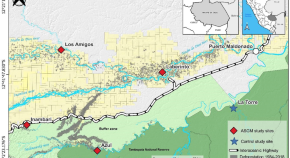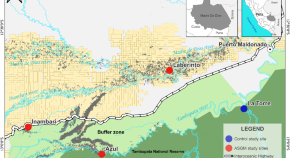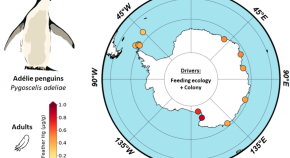Mercury in aquatic ecosystems of two indigenous communities in the Piedmont Ecuadorian Amazon: evidence from fish, water, and sediments
Authors (first, second and last of 10)

Collection
Biodiversity Research Institute, Portland, ME, USA
Littoral, Environnement et Sociétés (LIENSs), UMR 7266 CNRS--La Rochelle Université, La Rochelle, France
Sabin Center for Environment and Sustainability and Department of Biology, Wake Forest University, Winston-Salem, NC USA and Centro de Innovación Científica Amazonica (CINCIA), Puerto Maldonado, Madre de Dios, Peru
Secretariat of the Minamata Convention on Mercury, United Nations Environment Programme, Genève 10, Switzerland


















